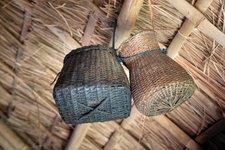Indigenous Jamaica
A truly exceptional piece of work
We don’t know exactly where it comes from, but it almost certainly came from the island of Hispaniola, or what is today Haiti / Dominican Republic, and it is made out of a very dark dense wood which we call Guayacan. This wood, aside from having medicinal properties, is extremely durable, and this is one of the... See more
We don’t know exactly where it comes from, but it almost certainly came from the island of Hispaniola, or what is today Haiti / Dominican Republic, and it is made out of a very dark dense wood which we call Guayacan. This wood, aside from having medicinal properties, is extremely durable, and this is one of the... See more
BBC - A History of the World - Object : Taino ritual seat
Just a moment...
britishmuseum.org
Just a moment...
britishmuseum.org
Just a moment...
britishmuseum.org
Guayacan ebony is used to make handle scales. It is one of the world's most precious woods. The wood is also known by its Latin name of "Lignum vitae" (wood of life).
Boker USA
This wood is native to the Caribbean and South America and was often used to make traditional Taino woodwork art. It has a high resin content which makes it incredibly dense and hard meaning it does not float and only sinks. Early European visitors named this wood ‘The Wood Of Life’ or ‘Lignum Vitae’ in Latin.
Unearth Taino History at These 5 Sites in Jamaica
adventuresfromelle.com
Jamaica got its name from a Taino word for the island ( Xaymaca or Yamaye ), which means Land of Wood & Water.
Unearth Taino History at These 5 Sites in Jamaica
Indigenous Peoples of the Caribbean: A Focus on the Taíno
youtube.comThe word Jamaica actually derives from the Arawak word Xaymaca, meaning “Land of wood and water”